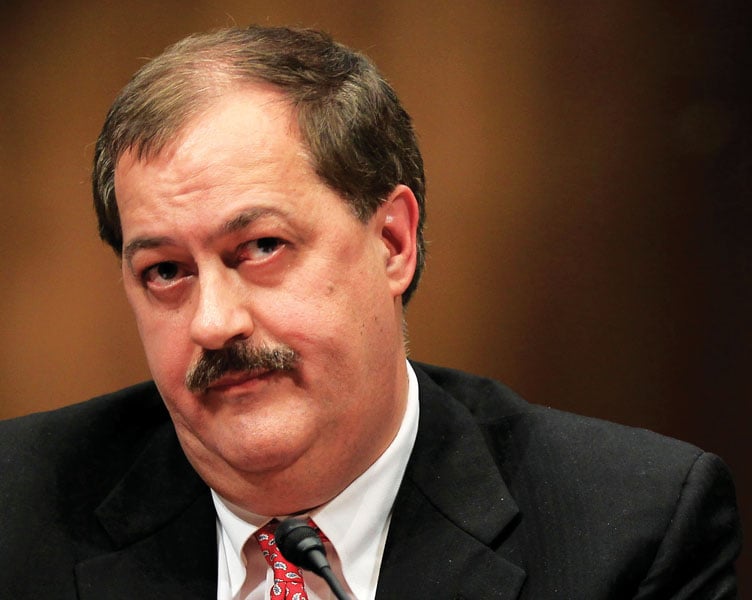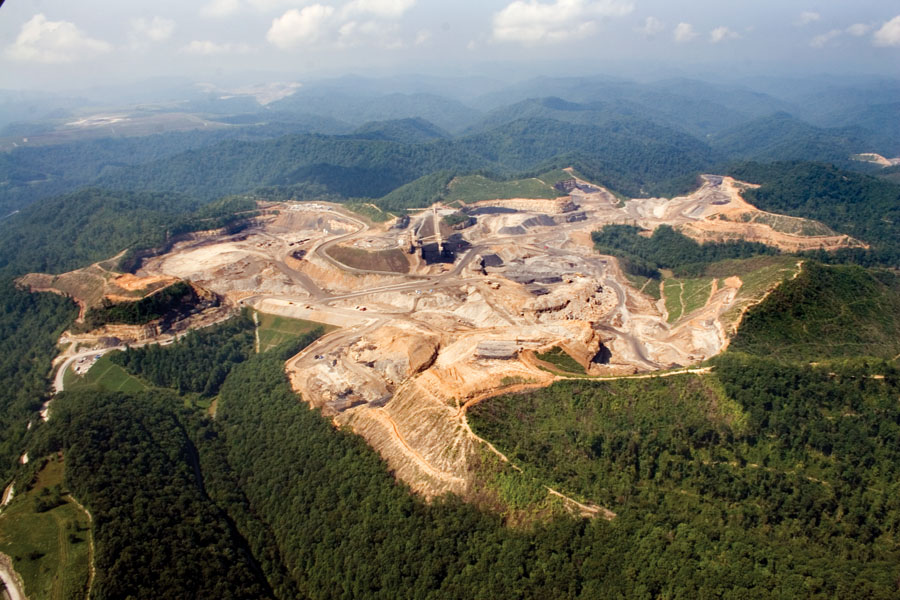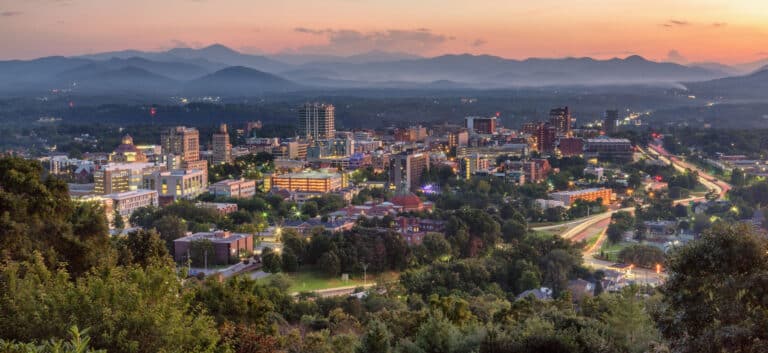In early December, a West Virginia jury found Don Blankenship guilty of a misdemeanor count of willfully conspiring to violate federal mining safety rules.
Perhaps you’ve heard of Blankenship—he’s Appalachian coal’s apex predator, who was dubbed the “Dark Lord of Coal Country” by Rolling Stone and who inspired a John Grisham novel about a man who buys a state supreme court election to get the verdict he wants.
During his stint as CEO of Massey Energy, two men died in Aracoma Alma Mine No. 1 of carbon monoxide poisoning after a conveyer belt caught fire, and later 29 men died at Upper Big Branch when sparks from a longwall cutter ignited a massive explosion. In his trial, on charges indirectly related to the Upper Big Branch disaster, Blankenship faced three felony counts worth a potential 30 years. His misdemeanor conviction may result in a maximum year of prison time.
So why are environmentalists, labor advocates and others with a grudge against the coal baron celebrating the verdict?
It’s because Blankenship has slipped off the hook so many times since the early ’80s that people are desperate for any kind of win. Patton Oswalt once compared George W. Bush and Dick Cheney to the Dukes of Hazzard—always managing to elude the consequences no matter what kind of pickle they found themselves in—and Blankenship has had much the same sort of run.
He grew up helping his single mother run a convenience store and gas station in southern West Virginia. Blankenship majored in accounting at Marshall University, then after a stint with the Keebler cookie company, he went to work for a Massey subsidiary in the middle of a labor fight with the United Mine Workers of America. The conflict turned violent—Blankenship kept a television riddled with bullet holes from his office as a souvenir—but ultimately Massey won out, breaking the UMWA in a victory that continues to resonate today.
The battle radicalized Blankenship as a rabid capitalist. In the documentary “Mine War on Blackberry Creek,” he laid out his philosophy: “It’s like a jungle, where a jungle is survival of the fittest. Unions, communities, people —everybody’s gonna have to learn to accept that in the United States you have a capitalist society, and that capitalism, from a business standpoint, is survival of the most productive.”
Blankenship’s subsequent rise in Massey paralleled the company’s rise to the top of the heap in Appalachian coal, accompanied by an increase in destructive mountaintop removal mining, a jump in safety violations and shortcuts to get around regulations that had sickening consequences—quite literally, in the case of a Massey mine that injected toxic waste into abandoned coal shafts, poisoning the groundwater of nearby communities, including Blankenship’s own neighborhood. He ran a private water line run to his house from nearby Matewan but didn’t offer the service to others.
When a jury found Massey owed a bankrupt operator $50 million for unfairly putting him out of business, Blankenship kicked in $3 million toward the election of a sympathetic state supreme court candidate, who then helped overturn the decision. When environmentalists protested coal’s effects on climate change and the damaging impact of mountaintop removal mining, he held a massive Labor Day rally with Ted Nugent and Hank Williams Jr.; Blankenshp himself donned an American flag outfit and railed against the “greeniacs” who wanted to put miners on the unemployment line.
There was another reason Blankenship’s haters celebrated the verdict, too. This was the first time a jury had convicted the chief executive of a major corporation of a workplace-safety-related charge after a fatal disaster.
So, why didn’t the other charges stick? What happened?
The prosecution’s challenges in charging Blankenship reflect those inherent in going after a high-level executive who rarely visited the site in which the crimes/infractions took place/happened/occurred. The U.S. Attorney for the Southern District of West Virginia went after Blankenship using conspiracy—an elastic charge that prosecutors have stretched to cover a huge range of crimes.

Blankenship was charged with conspiring to violate mine safety laws and defraud the federal Mine Safety and Health Administration (MSHA) in the years leading up to the UBB explosion, as well as lying after the disaster to Massey stockholders and the U.S. Securities and Exchange Commission to prop up the company’s stock price, which was directly attached to his compensation as CEO ($17.8 million in 2009, the year before the explosion).
Technically, Blankenship wasn’t directly charged for the explosion—the judge ordered it not be discussed by either side—but the case dealt with conditions in Upper Big Branch in the years before the disaster, as well as statements released afterward. Tellingly, most of the potential prison time was attached not to mine safety, but to manipulating Massey’s stock price. Think Martha Stewart and Enron CEO Kenneth Lay.
To link Blankenship to working conditions within Massey’s mines, prosecutors relied on millions of pages of documents and hundreds of hours of recordings that were made by Blankenship himself. Jurors heard him scold a subordinate for holding the phone incorrectly, complain to his girlfriend that stock options don’t buy groceries, and freak out over an internal memo about bad safety practices.
Blankenship’s defense attorney, Bill Taylor, responded with hundreds of documents of his own, much of it introduced during the marathon, five-day cross-examination of Chris Blanchard, former president of the subsidiary company that managed Upper Big Branch for Massey.
For the prosecution, Blanchard was integral in linking the micro-managing Blankenship to safety violations in the mine—which included calling ahead to warn miners when MSHA inspectors showed up, hanging dust monitors in spots so they’d give clean readings, massive accumulations of coal dust, and a wonky unreliable ventilation system. But Blanchard clearly was torn between lingering loyalty to his old boss and an immunity deal that protected him from criminal charges in exchange for his testimony. During cross-examination, Blanchard went wobbly and helped the defense build its case.
After nearly six weeks of testimony from 27 witnesses, mostly former Massey miners, managers and executives, the prosecution rested its case. The defense didn’t even bother to put on its own witnesses, having introduced much of its evidence during cross-examination. The unusual move also saved Blankenship from the possibility of having to take the stand.
A jury of eight women and four men deliberated for more than 40 hours, at least twice sending notes to the judge to indicate they were deadlocked. Finally they emerged with a guilty verdict on only one of the three charges, and only on a misdemeanor level at that. The “not guilty” verdicts on two counts related to lying to investors and regulators perhaps reflect the relatively little time the prosecution spent probing that part of its case. Or, it’s possible that the jurors have come, like much of America, to accept that a business lying about its commitment to safety after a disaster may reflect a corporate culture of spin more than a criminal act.
Blankenship will be sentenced in April. His lawyers have promised an appeal, and they definitely applied wedges and objections at every step of the trial in the attempt to create grounds for a reversal.
Still, his conviction—even on a misdemeanor—marks the first time that a coal CEO has been held accountable for what happened in his company’s mines. Other executives may write this case off as a fluke given Blankenship’s micro-managerial tendencies and outsized political profile, but the precedent has now been set.
Blankenship only made one statement about his conviction. Asked for comment outside the courthouse, he winked. “Just a wink. A wink and a nod,” he said. Then he laughed.
[divider]Read More on BlueRidgeOutdoors.com[/divider]








